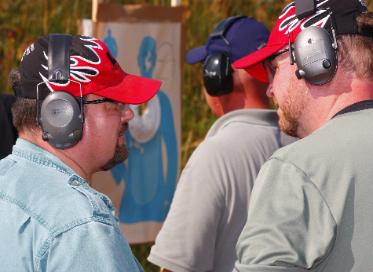Something over 25 years ago, I read a magazine interview of Fumio Demura. If you’re not familiar with Mr. Demura, he’s a Japanese Karate Master who has made a life long study of the traditional weapons of the Japanese peasantry. While the ruling class, the Samurai, were allowed the weapons of war of the time, swords and spears, bows and arrows, the peasantry was not allowed to go armed. Thus, the peasantry developed a fighting system using the agricultural implements of the time. Today, the best known of these improvised weapons is the nunchaku, originally a flail used to separate grain from chaff. Mr. Demura commented in this interview that everywhere he went on his visit to America, he saw kids swinging nunchaku. Many of these kids swing them better than he, but none of the American kids knew how to use them. 
Mr. Demura was making comment on the difference between skill at arms, and skill at combat. No one can question his skill at combat, that is his specialty. He knows how to win fights with those ancient weapons. What he never gave any attention at all was looking good, or making a show of swinging them about. Conversely, the American kids had made a great study of looking good, and putting on a good show, and had never put any study to the fighting aspects at all.
I witnessed another more recent example of this very argument in one of my classes. It was a very special class because my hero and guru John Farnam was in attendance. Like Mr. Demura, John has never worried about how he looks, but John has done the work to make him the most dangerous man I’ve ever known. John was looking, with great interest at one of my student’s holstered pistol. The student very proudly announced the make and model of his multi-thousand dollar custom piece, and specified the holster in which it was worn. He went on to exclaim, “And I can shoot 25 yard groups this
big with it!” while holding his right hand up in an OKAY gesture, suggesting a group much smaller than 2 inches. John looked at him, almost harshly and asked, “so what?”
In only 2 words, John portrayed an entire paragraph of dialogue. What John really meant with his curt “so what” was, “obviously, you are able to poke holes in an inanimate, stationary, non-aggressive piece of paper with great precision. But can you fight? Have you the ability to protect your own life while faced with a violent, determined attack, or can you only assassinate helpless, harmless bullseye targets?”
Skill at combat is a much larger study than mere skill at arms. Skill at arms is a part of skill at combat, but only a small part. We must be proficient with our tools, but that proficiency must never become the goal of our study.
The beginning of skill at combat is mindset. Learning to avoid panic, maintaining a calm, focused and purposeful mind is a start. Tenacity and determination is a piece of it. Tolerance of pain, both physical and emotional, is helpful. Maintaining a proper focus on the ultimate goal – victory and survival- is paramount.
Unfortunately, in training, we are able to measure only skill at arms. We are unable to quantify and measure skill at combat. Only fate and history will ever measure our skill at combat.
